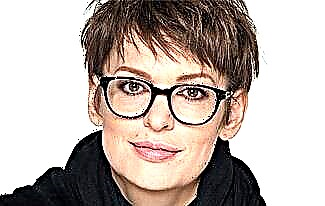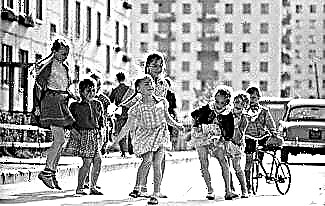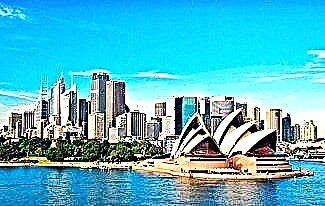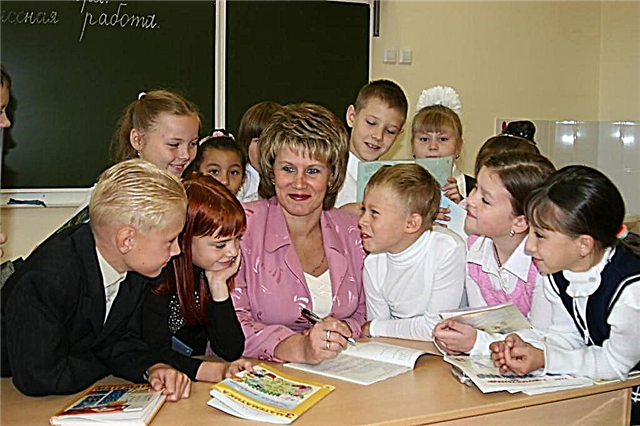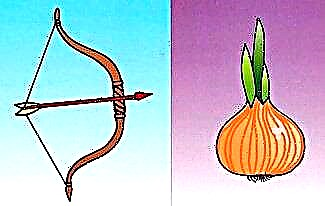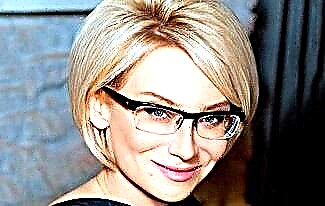Johann Sebastian Bach (1685-1750) - German composer, organist, conductor and music teacher.
Author of over 1000 pieces of music written in different genres of his time. A staunch Protestant, he created many spiritual compositions.

There are many interesting facts in the biography of Johann Bach, which we will talk about in this article.
So, before you is a short biography of Johann Sebastian Bach.
Bach biography
Johann Sebastian Bach was born on March 21 (31), 1685 in the German city of Eisenach. He grew up and was brought up in the family of musician Johann Ambrosius Bach and his wife Elisabeth Lemmerhirt. He was the youngest of 8 children of his parents.
Childhood and youth
The Bach dynasty has been known for its musicality since the early 16th century, as a result of which many of Johann's ancestors and relatives were professional artists.

Bach's father made a living organizing concerts and performing church compositions.
It is not surprising that it was he who became the first music teacher for his son. From an early age, Johann sang in the choir and showed a great interest in the art of music.
The first tragedy in the biography of the future composer occurred at the age of 9, when his mother died. A year later, his father was gone, which is why his older brother Johann Christoph, who worked as an organist, took up the upbringing of Johann.
Later Johann Sebastian Bach entered the gymnasium. At the same time, his brother taught him to play the clavier and organ. When the young man was 15 years old, he continued his education at a vocal school, where he studied for 3 years.
During this time of his life, Bach explored the work of many composers, as a result of which he himself began to try to write music. His first works were written for organ and clavier.
Music
After graduating from high school in 1703, Johann Sebastian got a job as a court musician with Duke Johann Ernst.
Thanks to his excellent violin playing, he gained a certain fame in the city. Soon he got bored of pleasing various nobles and officials with his game.
Wishing to continue developing his creative potential, Bach agreed to take the position of organist in one of the churches. Playing only 3 days a week, he received a very good salary, which allowed him to compose music and lead a rather carefree life.

During this period of his biography, Sebastian Bach wrote a lot of organ compositions. However, strained relations with local authorities pushed him to leave the city after 3 years. In particular, the clergy criticized him for his innovative performance of traditional sacred works, as well as for unauthorized departure from the city on personal business.
In 1706 Johann Bach was invited to work as an organist at the St. Blasius Church, located in Mühluhausen. They began to pay him an even higher salary, and the skill level of local singers was much higher than in the previous temple.
Both city and church authorities were very pleased with Bach. Moreover, they agreed to restore the church organ, allocating a large sum of money for this purpose, and also paid him a substantial fee for composing the cantata "The Lord is my Tsar."
And yet, about a year later, Johann Sebastian Bach left Mühluhausen, returning back to Weimar. In 1708 he took over as court organist, receiving an even higher salary for his work. At this time of his biography, his composing talent reached dawn.
Bach wrote dozens of clavier and orchestral works, eagerly studied the works of Vivaldi and Corelli, and also mastered dynamic rhythms and harmonic schemes.
A few years later, Duke Johann Ernst brought him from abroad many scores by Italian composers, who opened new horizons in art for Sebastian.
Bach had all the conditions for fruitful work, given that he had the opportunity to use the Duke's orchestra. Soon he began work on the Book of Organ, a collection of choral preludes. By that time, the man already had a reputation as a virtuoso organist and harpsichordist.

In the creative biography of Bach, a very interesting case is known that happened to him at that time. In 1717 the popular French musician Louis Marchand came to Dresden. The local concertmaster decided to arrange a competition between the two virtuosos, to which both agreed.
However, the long-awaited "duel" never happened. Marchand, who heard Johann Bach's play the day before and was afraid of failure, hastily left Dresden. As a result, Sebastian was forced to play alone in front of the audience, showing his virtuoso performance.
In 1717, Bach again decided to change his place of work, but the duke was not going to let his beloved composer go and even arrested him for some time for constant requests to resign. And yet, he had to come to terms with the departure of Johann Sebastian.
At the end of the same year, Bach took the post of Kapellmeister with the Prince of Anhalt-Ketensky, who understood a lot about music. The prince admired his work, as a result of which he paid him generously and allowed him to improvise.
During this period, Johann Bach became the author of the famous Brandenburg Concertos and the Well-Tempered Clavier cycle. In 1723 he got a job as cantor of the St. Thomas Choir in the Leipzig church.
At the same time, the audience heard Bach's brilliant work "St. John Passion". He soon became the "music director" of all the city's churches. During his 6 years in Leipzig, the man published 5 annual cycles of cantatas, 2 of which have not survived to this day.
In addition, Johann Sebastian Bach composed secular works. In the spring of 1729 he was entrusted to head the Collegium of Music - a secular ensemble.
At this time, Bach wrote the famous "Coffee Cantata" and "Mass in B minor", which is considered the best choral work in world history. For spiritual performance, he composed "High Mass in B minor" and "St. Matthew Passion", having been awarded the title of Royal Polish and Saxon court composer.
In 1747 Bach received an invitation from the Prussian monarch Frederick II. The ruler asked the composer to perform an improvisation based on a musical sketch he proposed.
As a result, the maestro instantly composed a 3-voice fugue, which he later supplemented with a cycle of variations on this theme. He called the cycle "Musical Offering", after which he presented it as a gift to the king.
Over the years of his creative biography, Johann Sebastian Bach has authored more than 1,000 works, many of which are now performed at the largest venues in the world.
Personal life
In the fall of 1707, the musician married his second cousin Maria Barbara. In this marriage, the couple had seven children, three of whom died at an early age.
Interestingly, Bach's two sons, Wilhelm Friedemann and Karl Philipp Emanuel, later became professional composers.

In July 1720, Maria died suddenly. About a year later, Bach remarried the court performer Anna Magdalena Wilke, who was 16 years his junior. The couple had 13 children, of which only 6 survived.
Death
In the last years of his life, Johann Bach saw almost nothing, so he continued to compose music, dictating it to his son-in-law. Soon he underwent 2 operations in front of his eyes, which led to the complete blindness of the genius.
It is curious that 10 days before the death of the man, his sight returned for several hours, but in the evening he was struck by a blow. Johann Sebastian Bach died on July 28, 1750 at the age of 65. The possible cause of death could be complications after surgery.
Bach Photos









